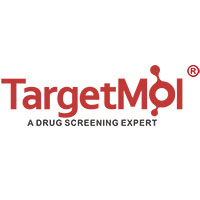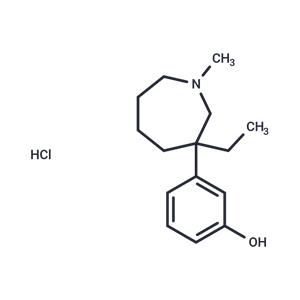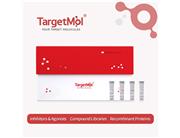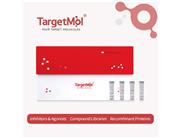| Name | Meptazinol hydrochloride |
| Description | Meptazinol hydrochloride (Meptazinol HCl) , a unique centrally opioid analgesic, is used as a narcotic antagonist with analgesic properties. |
| In vitro | Meptazinol inhibits a portion of 3H-labeled opiate and opioid peptide binding quite potently, with IC50 value under 1 nM. [1] |
| In vivo | Naloxonazine treatment 24 hr earlier attenuates Meptazinol (10 mg/kg i.v.) analgesia in both the mouse writhing and rat tail-flick assays. Meptazinol administered with morphine does not reverse the respiratory depressant actions seen with morphine alone, distinguishing meptazinol from other mixed agonist/antagonists. [1] The absorption of Meptazinol (8 mg/kg i.v.) from nasal cavity to systemic circulation is rapid and complete in male Sprague-Dawley rats. The maximum observed concentration is achieved at 15 min after administration and the absolute bioavailability is 96.06%. The cerebrospinal fluid level of Meptazinol (8 mg/kg i.v.) attains a high concentration of 2.71 μg/mL and then is followed by an exponential decline. The concentration of intravenous Meptazinol (8 mg/kg i.v.) achieves a peak at 10 min followed by a steep decline in the cortex dialysate. [2] Inclusion of Meptazinol (2 mg/kg) reduces the total dose of anaesthetic required, allows a more rapid recovery and is associated with less movement in response to surgery in cystoscopy patients. The patients in the control group tends to hyperventilate, and has lower end-tidal CO2 tension, and also higher pulse rates during surgery than the Meptazinol group. [3] Meptazinol (25 mg/kg) evokes larger increases in nociceptive thresholds in the mouse than in the rat, whereas morphine induces large increases in both species. Antinociceptive responses to Meptazinol are consistently inhibited in animals pretreated with naloxone, whereas scopolamine attenuates the effects of meptazinol in some, particularly the mouse tail immersion test. [4] Meptazinol (2 mg/kg i.v.) greatly reduces the incidence of ventricular extrasystoles that resulted from acute coronary artery occlusion as well as ventricular fibrillation (VF) in rats. Meptazinol also reduces ventricular arrhythmias, including fibrillation, in conscious rats subjected to coronary artery occlusion. [5] |
| Storage | Powder: -20°C for 3 years | In solvent: -80°C for 1 year | Shipping with blue ice. |
| Solubility Information | H2O : 27 mg/mL (100 mM)
DMSO : 50 mg/mL (185.32 mM)
|
| Keywords | Meptazinol hydrochloride | Meptazinol Hydrochloride |
| Inhibitors Related | Docusate sodium | Bevenopran | Mirtazapine | (-)-Menthol | Matrine | Progesterone | Naltrexone hydrochloride | Trimebutine | Mianserin hydrochloride | Amentoflavone |
| Related Compound Libraries | Anti-Neurodegenerative Disease Compound Library | Bioactive Compound Library | Pain-Related Compound Library | Membrane Protein-targeted Compound Library | Drug Repurposing Compound Library | Inhibitor Library | Anti-Cancer Approved Drug Library | Bioactive Compounds Library Max | GPCR Compound Library | Anti-Cancer Drug Library |

 United States
United States



